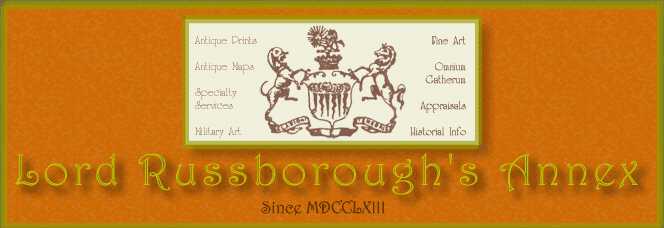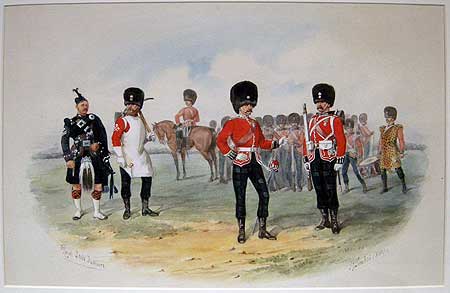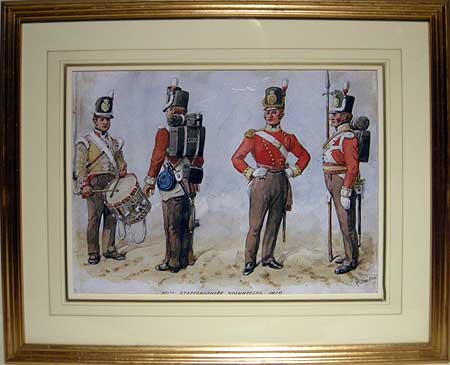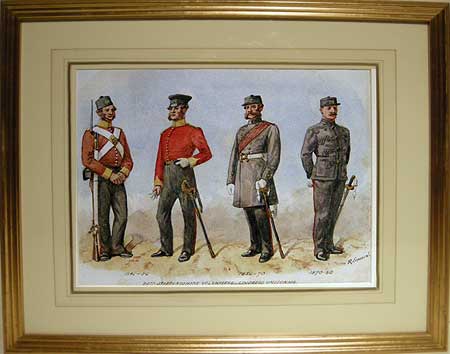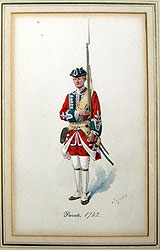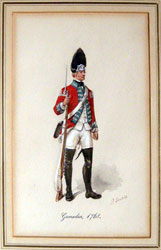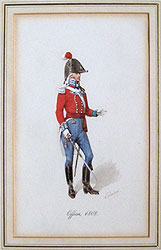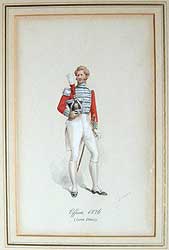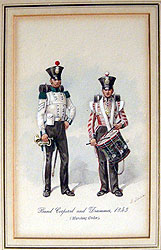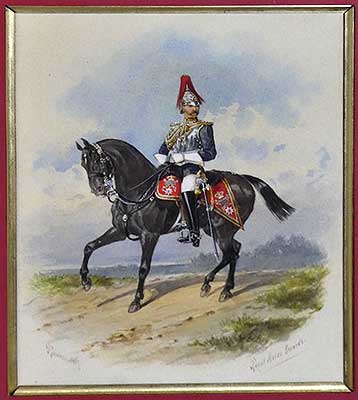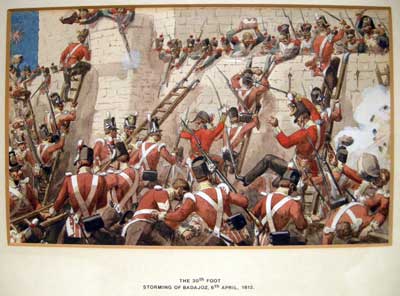
Simkin R. The 30th. Foot Storming of Badajoz, 6 April 1812
Watercolour, Signed (Bottom Right) titled on mount, matted, glazed, gilt-wood frame
8 3/4 x 10 1/2" ( 22.2 x 26.2 cm) Frame: 14 1/2 x 19"
The siege was one of the bloodiest in the Napoleonic Wars and was considered a costly victory by the British, with some 4,800 Allied soldiers killed or wounded in a few short hours of intense fighting during the storming of the breaches as the siege drew to an end. Wellington is reported to have wept at the sight of so many casualties.
The 2nd Battalion, 30th (Cambridgeshire) Regiment of Foot embarked for Portugal in March 1809 for service in the Peninsular War. It fought at the Siege of Badajoz in March 1812: the battalion's losses were 6 officers including the commanding officer, Lieutenant Colonel George Grey, and 132 other ranks. It also saw action at the Battle of Salamanca in July 1812; at Salamanca, Ensign John Pratt, a junior officer in the battalion, captured the French Imperial Eagle of the 22nd Regiment de Ligne. It went on to fight at the Siege of Burgos in September 1812 before returning home in December 1812. The battalion subsequently landed in Holland and fought at the Battle of Quatre Bras and the Battle of Waterloo in June 1815.
Ref. 632 RY16 (179)/AOL /r.ando>VOL PRICE CODE D

